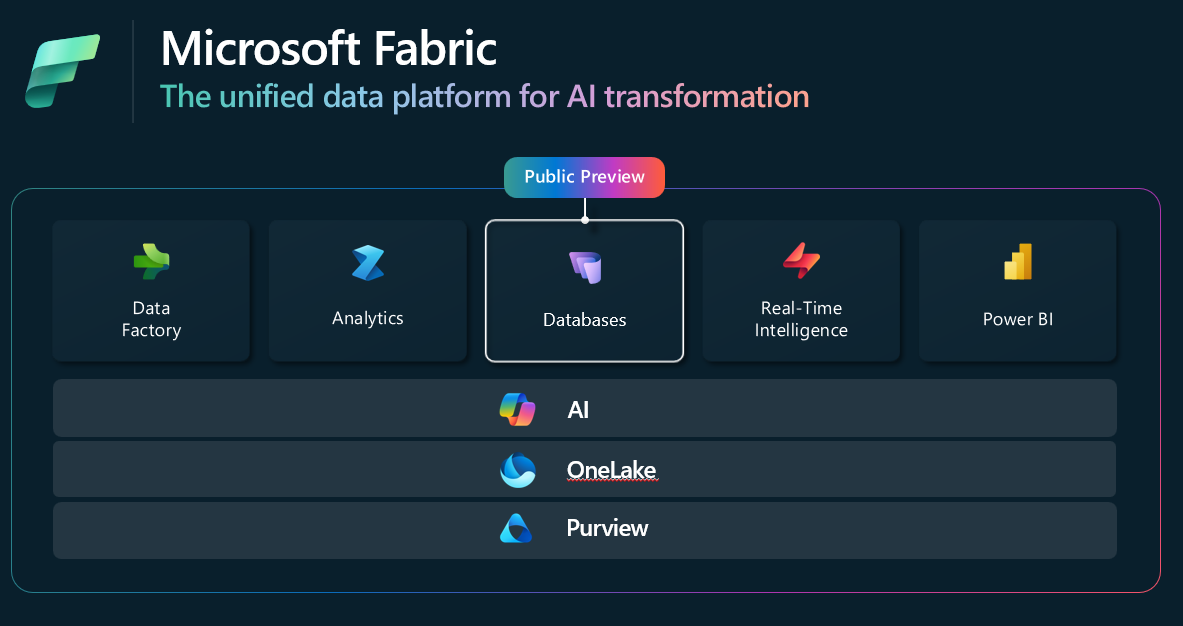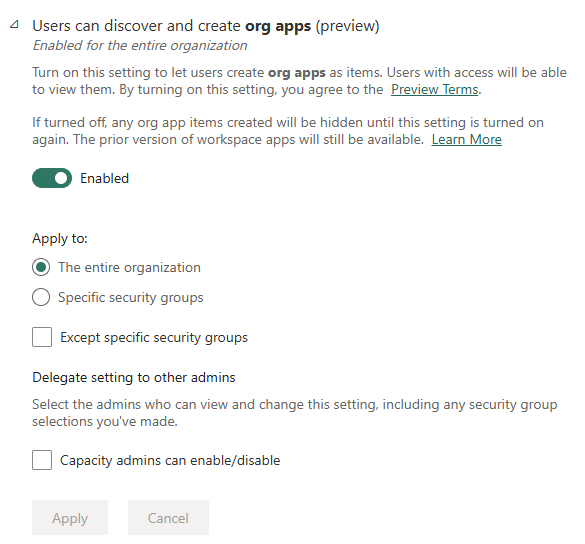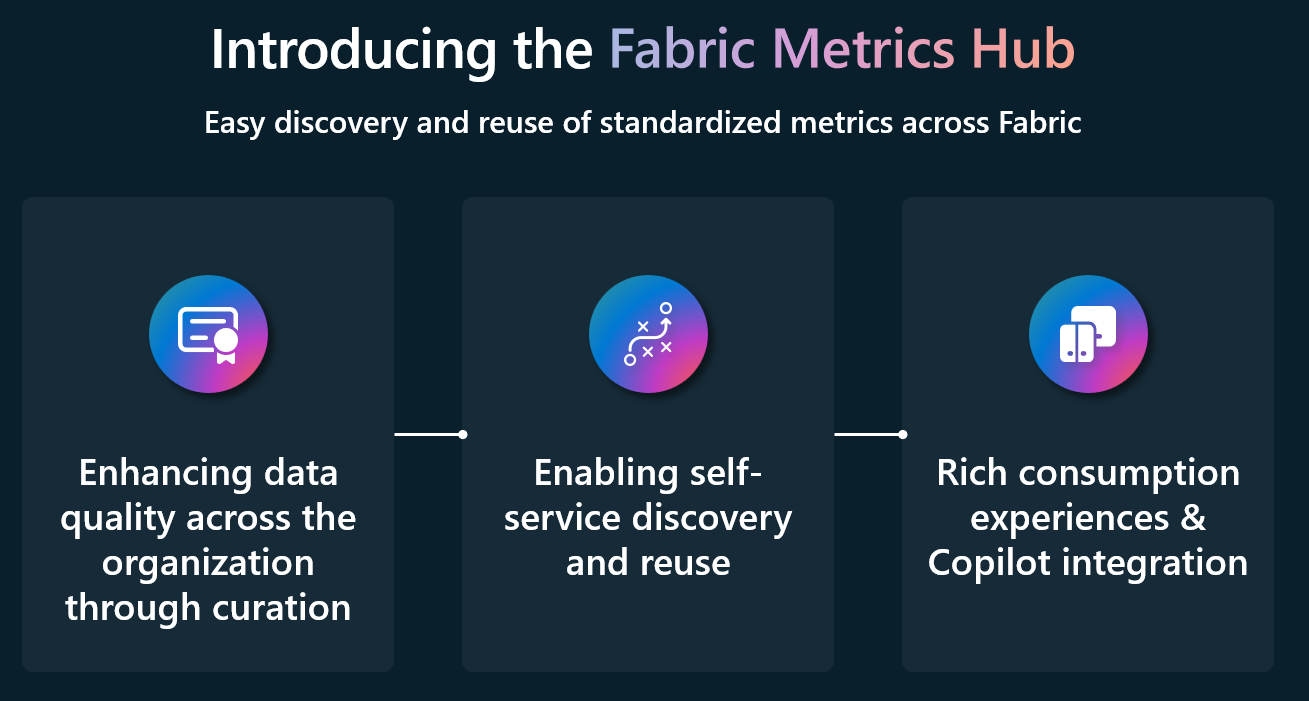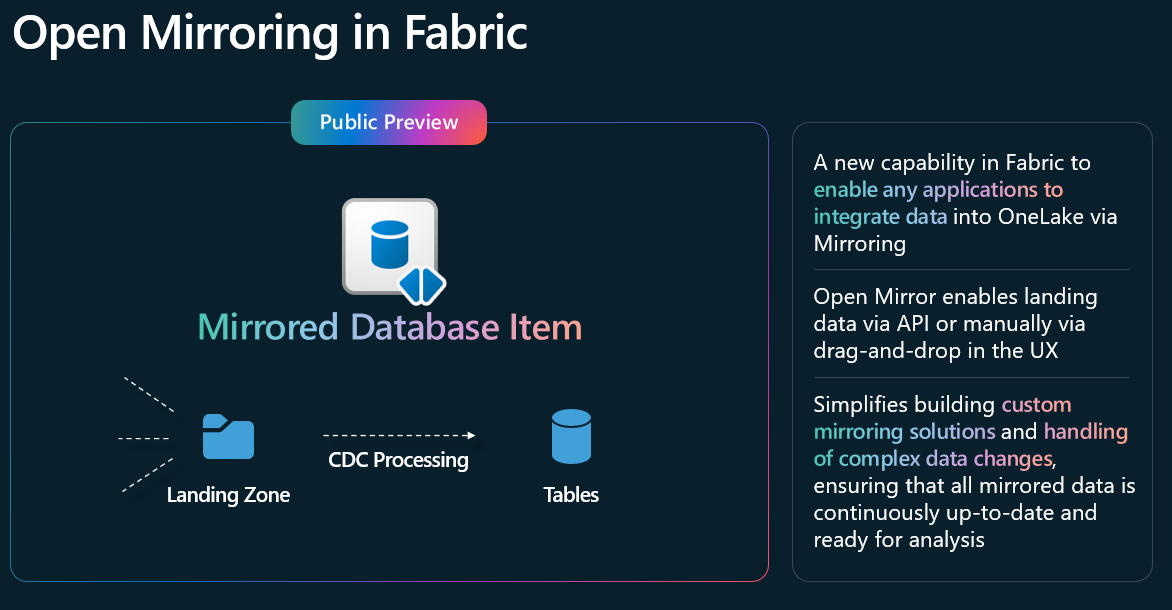Last week was the annual Microsoft Ignite conference in Chicago. In this blog, I will take you through my most important highlights of the sessions.
Fabric SQL Database (Preview): The future of SQL in the cloud
Let's get straight to the point with the biggest announcement: Fabric SQL Database!
SQL Database in Microsoft Fabric is a developer-friendly, transactional database, based on Azure SQL Database, with which you can easily create an operational (OLTP) database in Fabric. In addition to the Fabric Lakehouse and the Warehouse, you now also have an efficient SaaS SQL database at your disposal as a developer with the performance of a transactional database and under the hood a(n extra) storage that is optimized for analytical purposes (Delta Parquet).
SQL Database in Fabric is:
- The home of OLTP workloads in Fabric
- Easy to configure and manage
- Set up for analytics by automatically replicating data to OneLake in near-real-time
- Based on the underlying technology of Mirroring in Fabric
- Under the hood, the same as Azure SQL Database, plus you have a web-based editor in the Fabric portal

With the introduction of Fabric SQL Database, Microsoft is taking traditional database management to a new level:
- Simple and secure architecture: Automated management and scaling optimizations
- Source control integration and CI/CD support: Essential for modern DevOps processes
- Capacity billing: Pausable compute resources ensure cost efficiency
- Unique cross-platform capabilities: Perform JOINs across databases, warehouses, and lakehouses
Metrics Hub: Standardized Metric management in Fabric (Preview)
The introduction of the Metrics Hub in Fabric is a new standard in how organizations define, track, and share KPIs. This new approach integrates seamlessly with Power BI and provides centralized management for metrics, enabling consistency and better collaboration. You might be thinking, this sounds familiar? You are! 😊 First there was Metrics, then Goals, and now the Metrics Hub where you can create Metric sets.Fabric AI Capacities
There will be an option to run all AI (=Copilot) compute on a separate capacity, so that other Fabric workloads are not affected by the use of Copilot. You still need at least an F64, and it's not available in all Azure regions, so be sure to check the Copilot FAQ for all your questions.Fabric Org Apps
Org apps is a new item in your workspace, which now allows you to create an app as you did before by publishing an App in your workspace. One of the benefits of this is that you can create multiple Org apps per workspace!In addition, you can customize more things like the design and behavior of the app. However, you can still only add items from the current workspace.
It is important to know that there is a tenant setting for Org apps that you need to activate. You can also use Org apps with a trial capacity.

- In addition to Power BI reports, you can now also add Fabric notebooks and real-time dashboards
- The distribution of org apps has been simplified, because access to underlying items (e.g. semantic models) is also applied, even in other workspaces. Users will therefore receive read access to all items that are dependent on the items in the app. These rights will also be removed when a user is deleted. There are a few exceptions, so check this.
- The items in an Org app are no longer a copy of the item, but the original items from the workspace
- Check all the differences between workspace and Org apps here
Power BI
- The biggest update by far: write-back with User Data Functions: native write-back integration with reusable functions and new options to link these to buttons in Power BI, with which you can update data in a source
- In the Pipeline activity, you can now refresh a semantic model at table and partition level
- Dataflow Gen2 updates: this item will soon also be supported in CI/CD (in source control and deployment pipelines)
OneLake
- Shortcuts with Iceberg tables: Direct integrations with Snowflake and other platforms
- Mirroring: Support for Azure SQL and Snowflake (GA)
- Cross-cloud JOINs: Analyze datasets spread across different clouds and formats: You can combine SQL Database, Lakehouses and Warehouses in one query
- Open mirroring (preview): this allows you to write change data from any application directly into a mirrored database in Fabric. Open mirroring is based on the open Delta Lake table format
Platform
- Workspace monitoring (not to be confused with the Admin Monitoring workspace, this is intended for tenant insights): a database in your workspace that records log data and metrics about all items in that workspace. All of this is recorded in a real-time intelligence Eventhouse database. There are example queries in the Fabric samples GitHub.
- Surge protection for capacities: This capability is coming soon, and it allows you to set a cap on the background workload of a capacity. This helps to better guarantee the availability of interactive workloads (such as Power BI report usage). You can set this per capacity.
- OneLake catalog: This is the new central hub to find, search, and use all Fabric items. You can use all available filters, including new ones like domains and tags. You can explore in-place items and view details.
Conclusion
Ignite 2024 showed that Microsoft is strongly committed to an integrated and future-oriented data platform, with AI and Copilot as a common thread. Innovations such as workspace monitoring, improved security through service principal support, and the advanced capabilities of the OneLake Catalog make it easier than ever to manage data effectively.I believe that with these developments, the Microsoft Intelligent Data Platform is ready to support organizations in an increasingly data-intensive world.
Do you have any highlights from Ignite that I missed? Then let me know in the comments!
Items that are being worked on now and in the future are often public via the Fabric roadmap. There you can find per workload the items that will be worked on in the coming 6-12 months.
Some examples:
- A new Fabric navigation experience
- Support for folders for Git integration
- Better ownership of Fabric items
- Fabric Capacity Metrics Cross-capacity insights
- Capacity Metrics Chargeback






No comments:
Post a Comment
Thanks for taking the time to provide feedback!
Cheers,
Nicky